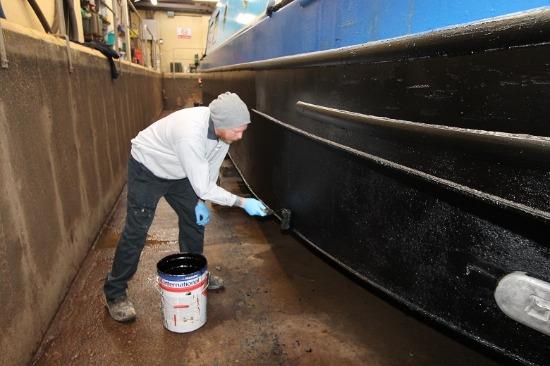Basic tips for maintaining your narrowboat
Owning a canal boat can be a great experience, but you'll need to know at least the basics for maintaining your boat. If you look after your boat and take care to maintain it correctly a canal boat can last a very long time and hold it's value reasonably well. However if you do not take care of your boat you will likely find that it ages very quickly. Read our top tips for basic maintenance.This is however not a comprehensive list!
Engine Maintenance
Regular engine maintenance is very important to keep the engine running efficiently. It's a good idea to add fuel conditioner to diesel engines to help improve performance. Fuel conditioner will also help to improve the economy of the engine and reduce emissions, by dissolving sediments which may have collected in the fuel tank. It can also help to prevent fungal growths occurring.
During periods of cold weather you will also need to add anti-freeze to the tank to avoid risk of the tank cracking during cold weather.
Blacking the Hull

Blacking the hull of your narrowboat is essential maintenance and needs to be done ideally every 2-3 years if using Bitumen or 5-6 years if using Epoxy finish. The boat will need to be taken out of the water, either in a dry dock or onto a slipway trailer. It will need to be pressure washed to clean off dirt and debris and allowed to dry before applying the blacking. Read our other blog about 'blacking a narrowboat for more details'
Whilst the boat is out of the water, it's also worth carrying out routine maintenance on other components of the boat which sit below the waterline, carry on reading for more advice on this.
Inspections to undertake whilst the boat is out of the water
Whilst the boat is out of the water, you should inspect the propeller and the rudder. Make sure that they move freely and look for any holes or corrosion. Replace the rudder if there are even small holes as this can prevent the boat from turning as it should do. Small holes will become larger over time as corrosion progresses so it's best to replace the rudder if its showing signs of wear. Remove any debris and weeds that have got caught on the propeller as this can cause damage to the propeller and the engine.
Also check all outlet pipes on the boat. Corrosion on these pipes can result in waste being expelled to the wrong places, and could even cause waste to leak into the bilges of the boat. Replace any pipes that show any signs of damage. Ideally use cleaning products and detergents which are environmentally friendly as they will be less corrosive to the pipes than harsh chemicals.
Check the Decks
Before leaving a mooring, Check all ropes and mooring pins, so that you know they are accessible and work correctly when needed. Replace any frayed ropes, as they will be highly likely to break the next time they are under any strain!
Before plugging into shore power, check your power cable to make sure there is no damage to the connectors or wire. It's important for safety sake to make sure the power cables stay in good condiiton.
If you have a solar panel connected to your boat, it's a good idea to clean the panel with a soft cloth and soapy water. This will help with performance of the solar panel.
Bilge Pump Checks
Regularly check the bilge pump to make sure it's working correctly. Automatic bilge pumps are a great investment, especially if you are planning to leave the boat for long periods of time, and can help keep the boat afloat whilst you are away. They work by switching on automatically if water ingress is sensed.
Check the Stern Gland
Check the stern gland is adequately greased and not dripping. If the gland dripping it might need re-packing.
For more canal boat maintenance tips, see the Narrowboat Maintenance and repairs section of our blogs, and remember this is not an exhaustive list!